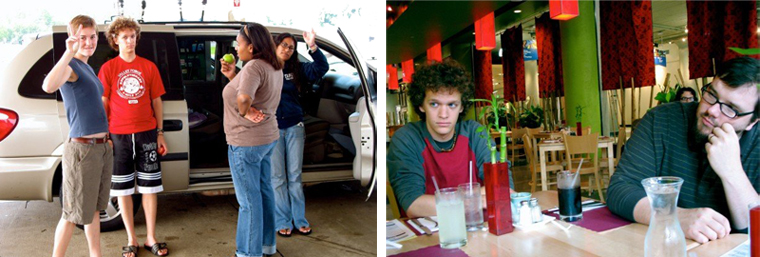Ron Tinsley, Oxford Circle
rtinsley@pmhsonline.org
For some people, life gives them lemons, sugar, and water and they make lemonade. But for others like Eric Mackee, life just gave him lemons. As the valedictorian at Philadelphia Mennonite High School, he has demonstrated that God can help you make the best kind of lemonade. He has been doing this ever since he was a child.
Eric grew up in a single parent household in North Philadelphia. “We lived from paycheck to paycheck occasionally going on public assistance,” he says. “We moved around a lot.”
His mother struggled to provide for him considering that she gave birth to him at the age of 15. “Because of her young age, she shared things with me that forced me to grow up fast,” Eric says. As he got older, he began to carry the burdens of his family. He learned to pretend he was happy when he was not. This helped him to cope with his reality.
Eric’s connection to Philadelphia Mennonite High School came through a local church familiar with Lancaster Mennonite High School. A minister wanted him to attend there but he did not want to live away from his mother. His aunt heard about PMHS and suggested the school. He still was not interested.
“Once I started attending PMHS, I kept trying to find reasons to leave. After a while, I began to open up and share with my teachers and other students. We were like one big family. I guess I did not realize how much I needed that. I learned how to integrate my faith into my life. God began to work in me,” Eric says.
Eric has learned to embrace the idea of service and helping others. “Chapel helped provide a platform for me to hear from God and from others. They consistently challenged me to go beyond myself and give others my time.” His trip to Indonesia (through the LEAP program) gave him the opportunity of a lifetime. Over his four years, he got involved in other activities such as serving as the Director of a PMHS play and participating in a mock trial debate at Temple University. He was also president of his class in his senior year.
During his valedictorian speech at graduation, Eric quoted the respected Journalist David Brinkley: “A successful man is one who can lay a firm foundation with the bricks others have thrown at him.”
Eric has had his share of bricks thrown at him that could have derailed him. Through God’s grace, he is not only a survivor, he is a trailblazer. Others helped him to blaze these new trails like the Christianaires, a Sunday School class at Blooming Glen Mennonite Church that sponsored him as a student.
“We continue to have high expectations for Eric. God has a plan for him that is still unfolding. PMHS is glad to be apart of that,” says Principal Dr. Barbara Moses.
Eric is attending Georgetown University in Washington D.C. He will be the first in his family to attend college. He is one of four PMHS seniors selected to receive the Longacre Scholarship Award that helps to pay for his textbooks in his first year of college.
“During my time at PMHS, I got involved in student led morning prayer. I found myself doing it at home. Prayer works and it strengthened my relationship with God. I saw God work,” Eric says.

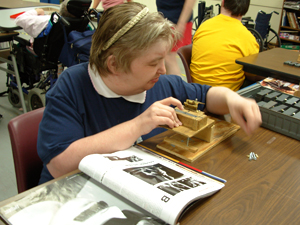
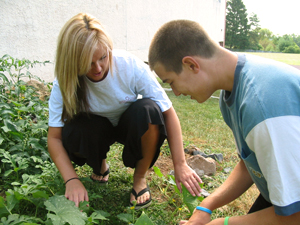 A list of people waiting for developmental disability services will be with us for the foreseeable future. Service providers like Indian Creek Foundation will need to continue to think about non-traditional, creative solutions so that all people who need services are supported despite the shortfalls of funding. I would like to thank the Franconia Mennonite Conference as well as all our local Mennonite churches and their members for all the support that you have given and continue to give to our ministry at Indian Creek Foundation. You are a blessing to us and those we serve.
A list of people waiting for developmental disability services will be with us for the foreseeable future. Service providers like Indian Creek Foundation will need to continue to think about non-traditional, creative solutions so that all people who need services are supported despite the shortfalls of funding. I would like to thank the Franconia Mennonite Conference as well as all our local Mennonite churches and their members for all the support that you have given and continue to give to our ministry at Indian Creek Foundation. You are a blessing to us and those we serve.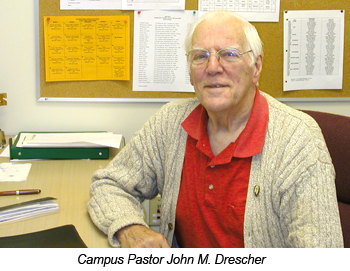 What led to my sense of God’s call to accept the invitation to serve as Campus Pastor at
What led to my sense of God’s call to accept the invitation to serve as Campus Pastor at 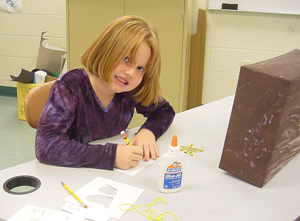 I think of a retreat of seventh graders from Quakertown Christian School. It was a God moment. The speaker, dressed in clothes such as the Apostle Paul might have worn, led the students through Paul’s conversion and missionary travels. These sessions were followed by a fireside worship and prayer time, during which nearly every student came forward to ask for prayer and to make a new commitment a never-to-be-forgotten spiritual experience.
I think of a retreat of seventh graders from Quakertown Christian School. It was a God moment. The speaker, dressed in clothes such as the Apostle Paul might have worn, led the students through Paul’s conversion and missionary travels. These sessions were followed by a fireside worship and prayer time, during which nearly every student came forward to ask for prayer and to make a new commitment a never-to-be-forgotten spiritual experience.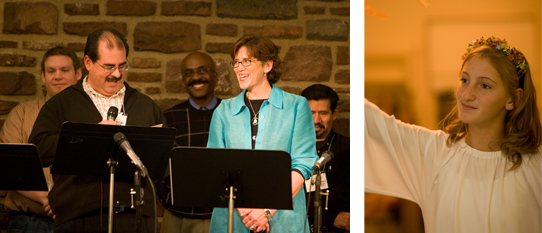
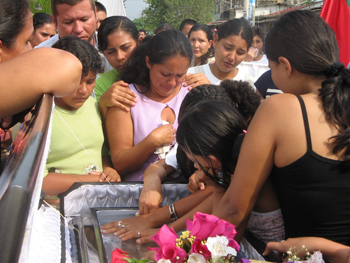 At 3 a.m. on June 14, 2007 several assailants broke through a skylight and into the Bogota Mennonite Church office of Justapaz: the Christian Center for Justice, Peace, and Nonviolent Action. Upon entering, they disabled the security and surveillance system and proceeded to steal two of Justapaz’s thirteen computers. The computers stolen were the two containing the most sensitive information including documented cases of political violence and churches active in courageous social justice work. They also held information on Justapaz staff, including Janna Hunter Bowman (Documentation and Advocacy Coordinator of Justapaz) and individuals connected with their documentation project entitled, “A Prophetic Call: Colombian Protestant Churches Document Their Suffering and Their Hope.†Later that day, after making phone calls to colleagues in both the United States and Colombia in order to coordinate emergency response between Bogota and Washington, D.C., a troubled yet remarkably calm Janna Hunter Bowman sat down with me to talk about her work and her life in Colombia.
At 3 a.m. on June 14, 2007 several assailants broke through a skylight and into the Bogota Mennonite Church office of Justapaz: the Christian Center for Justice, Peace, and Nonviolent Action. Upon entering, they disabled the security and surveillance system and proceeded to steal two of Justapaz’s thirteen computers. The computers stolen were the two containing the most sensitive information including documented cases of political violence and churches active in courageous social justice work. They also held information on Justapaz staff, including Janna Hunter Bowman (Documentation and Advocacy Coordinator of Justapaz) and individuals connected with their documentation project entitled, “A Prophetic Call: Colombian Protestant Churches Document Their Suffering and Their Hope.†Later that day, after making phone calls to colleagues in both the United States and Colombia in order to coordinate emergency response between Bogota and Washington, D.C., a troubled yet remarkably calm Janna Hunter Bowman sat down with me to talk about her work and her life in Colombia.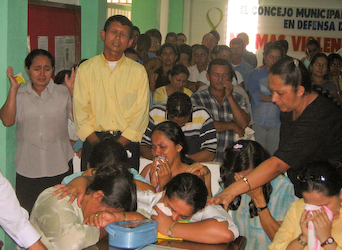 Janna explained that the program she coordinates not only documents and denounces violence, but also announces hope through reporting on social restoration and peacebuilding initiatives carried out by local churches amidst the violence. “It is incredibly humbling and a sacred privilege to be able to accompany these faithful servants as they live out sacrificial obedience joyfully, even when it means risking their own lives,†she said.
Janna explained that the program she coordinates not only documents and denounces violence, but also announces hope through reporting on social restoration and peacebuilding initiatives carried out by local churches amidst the violence. “It is incredibly humbling and a sacred privilege to be able to accompany these faithful servants as they live out sacrificial obedience joyfully, even when it means risking their own lives,†she said.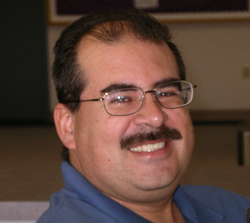 I love questions.
I love questions.